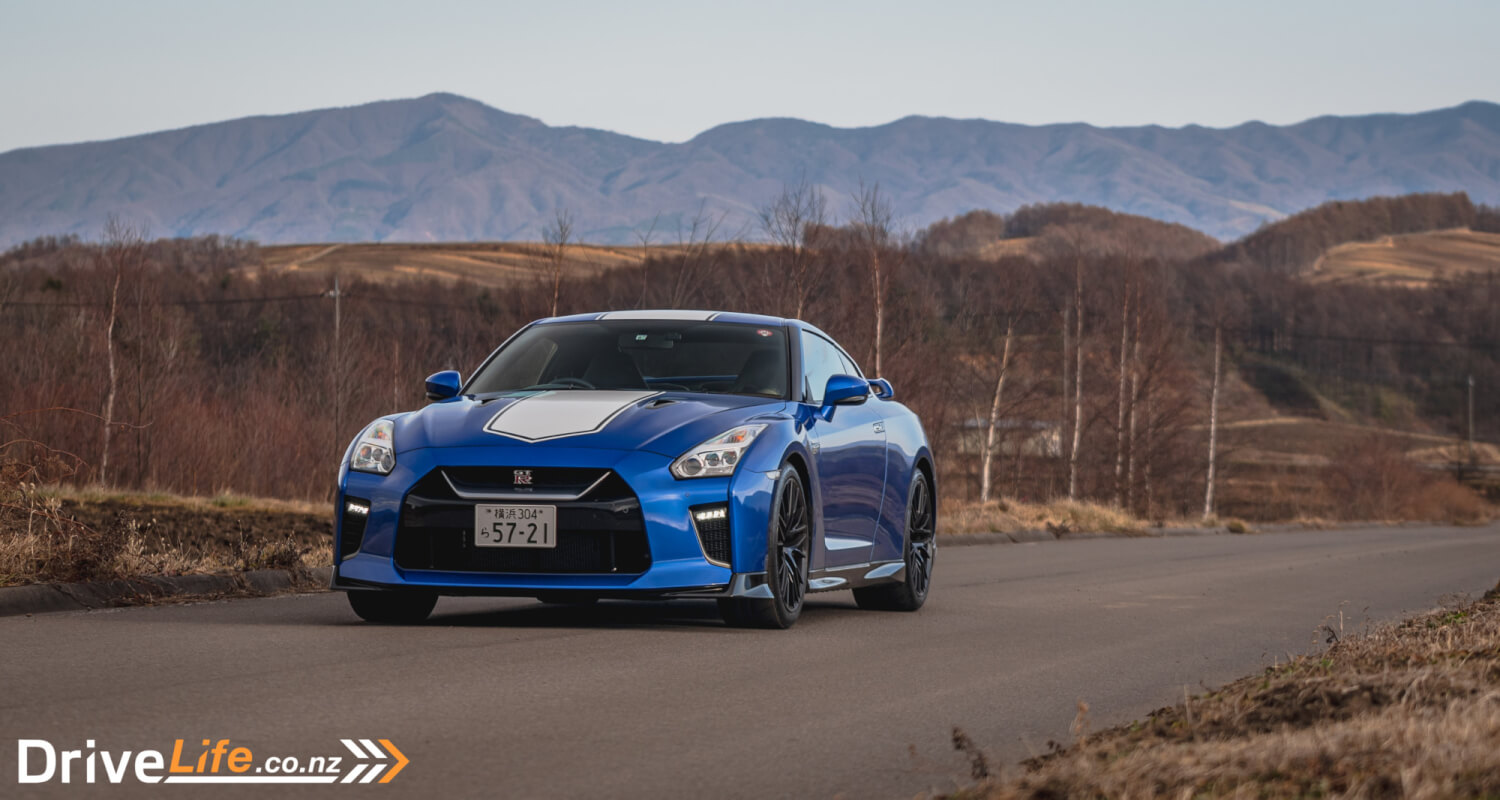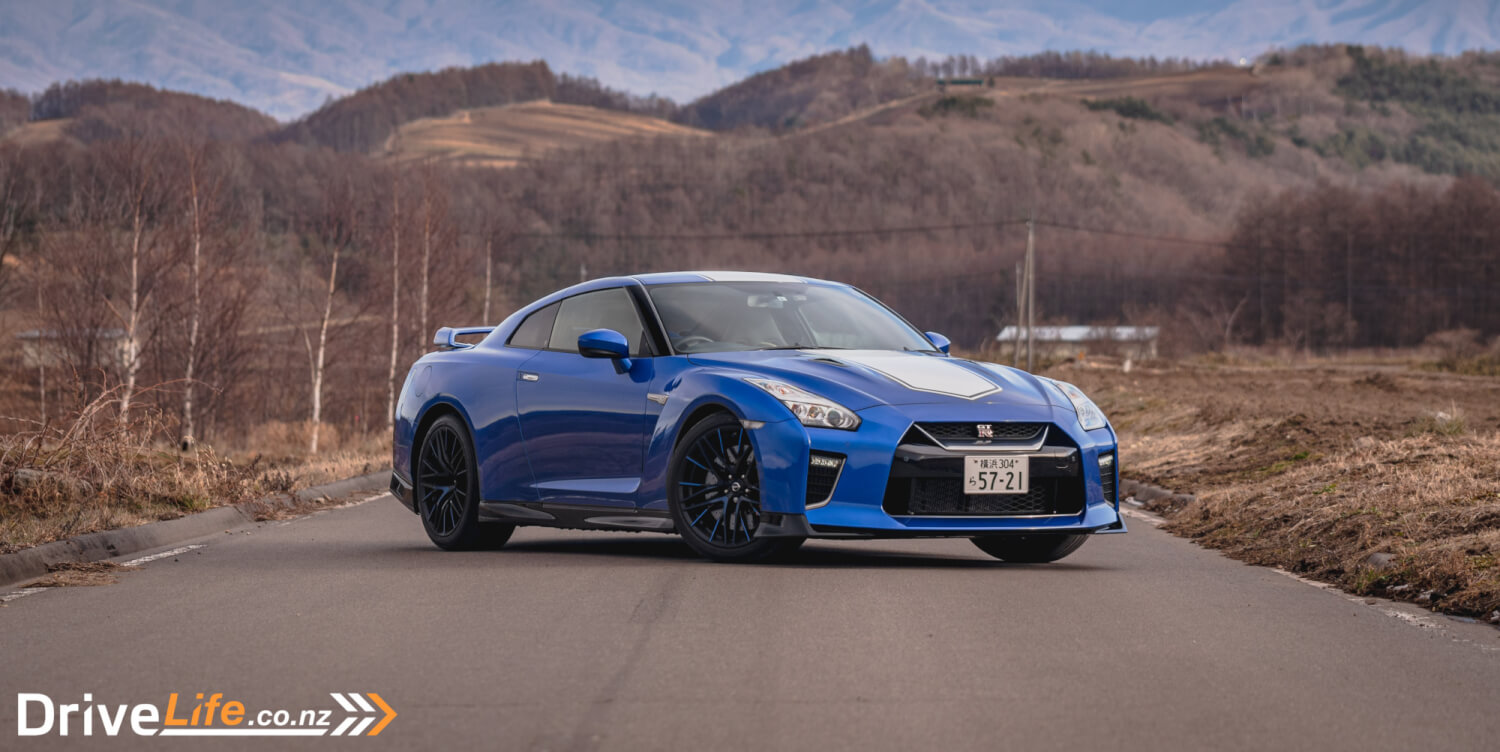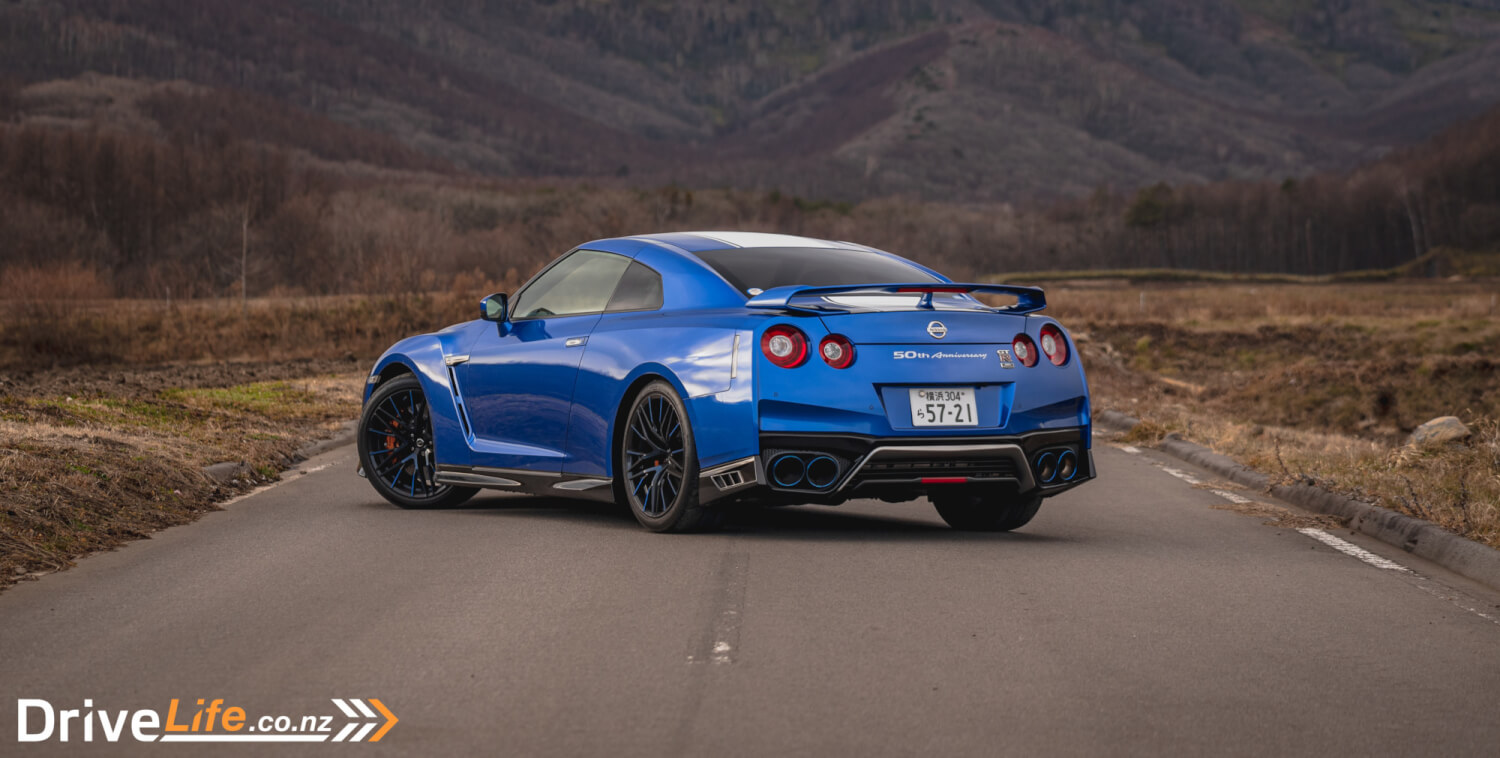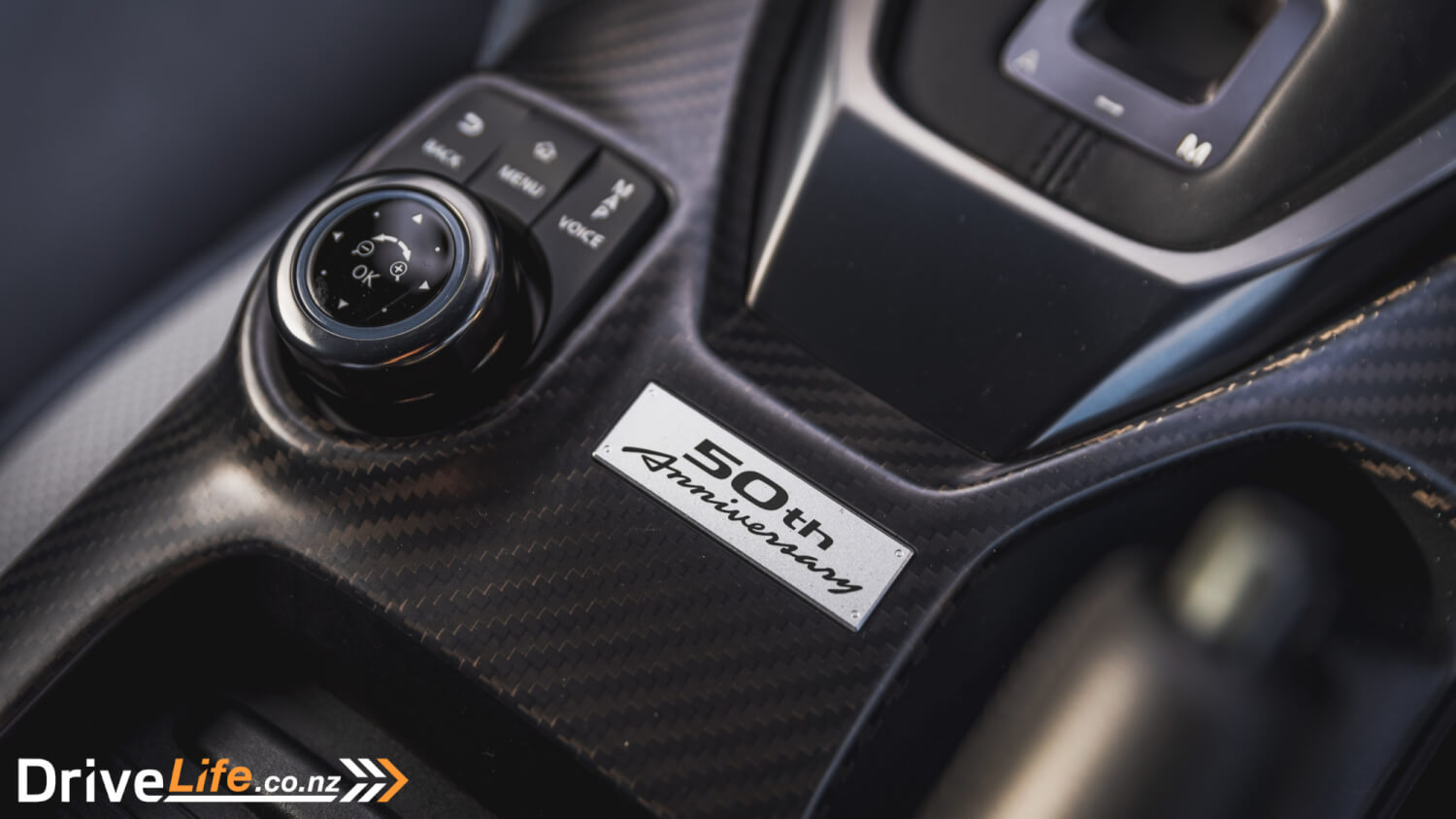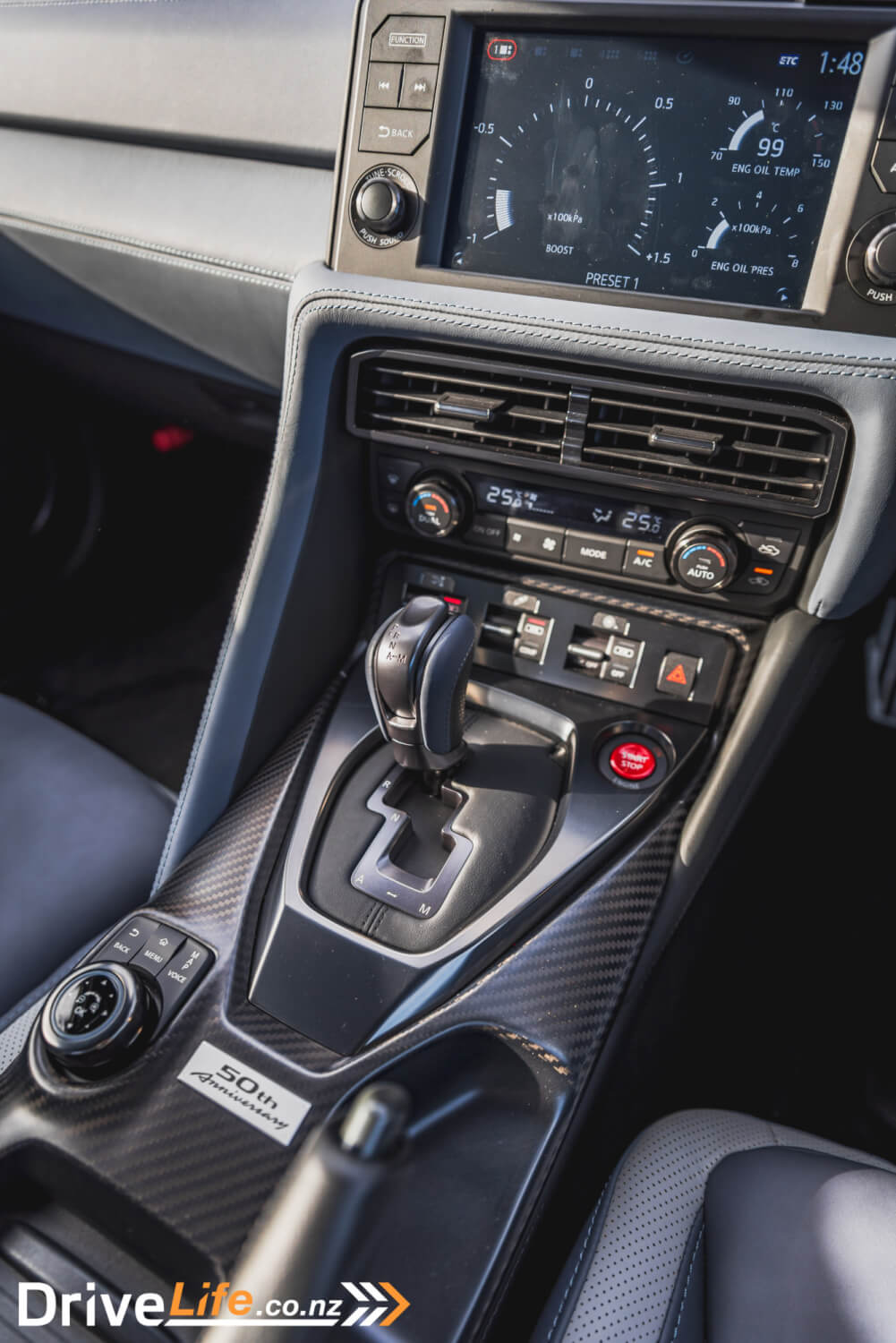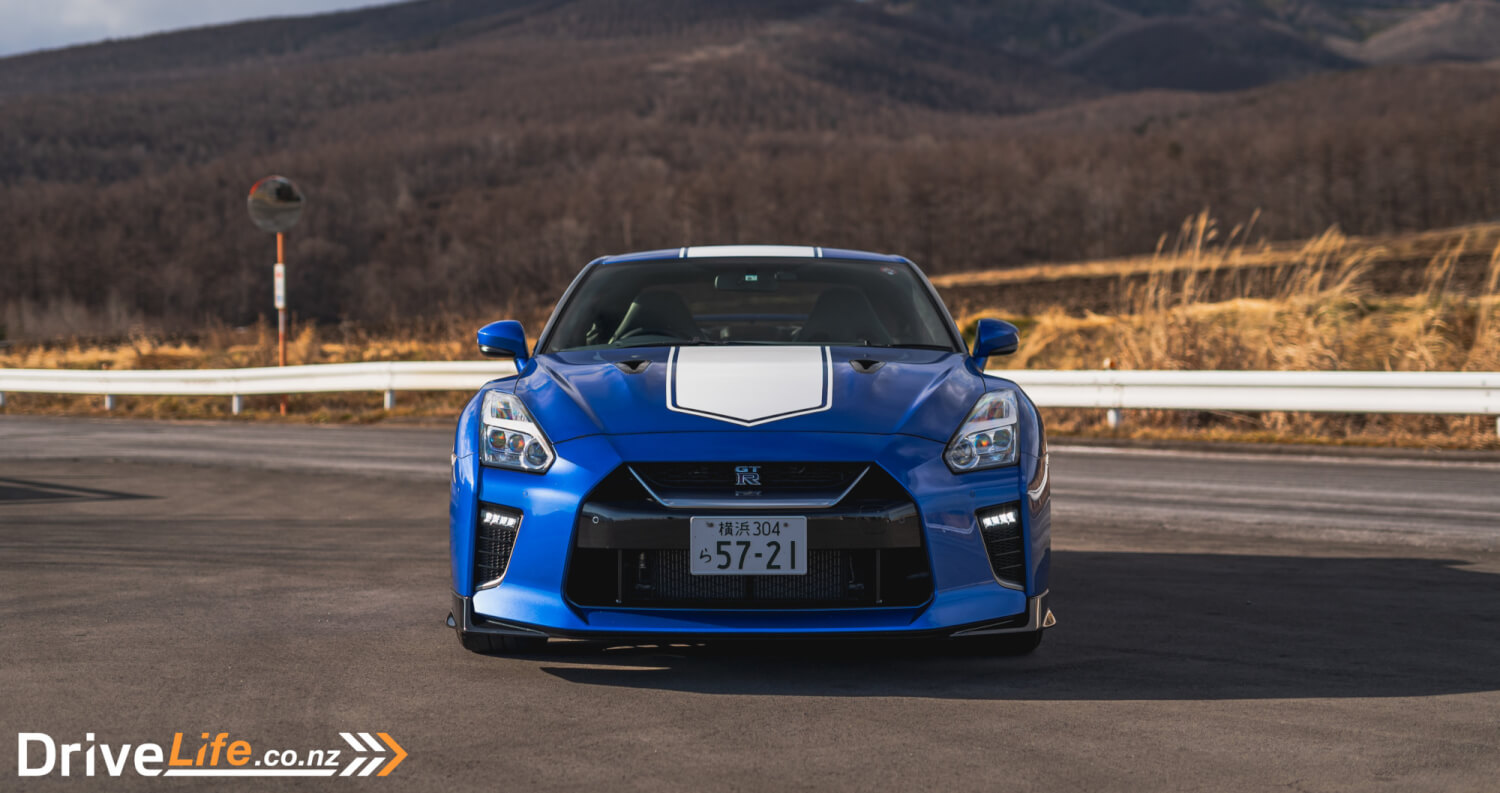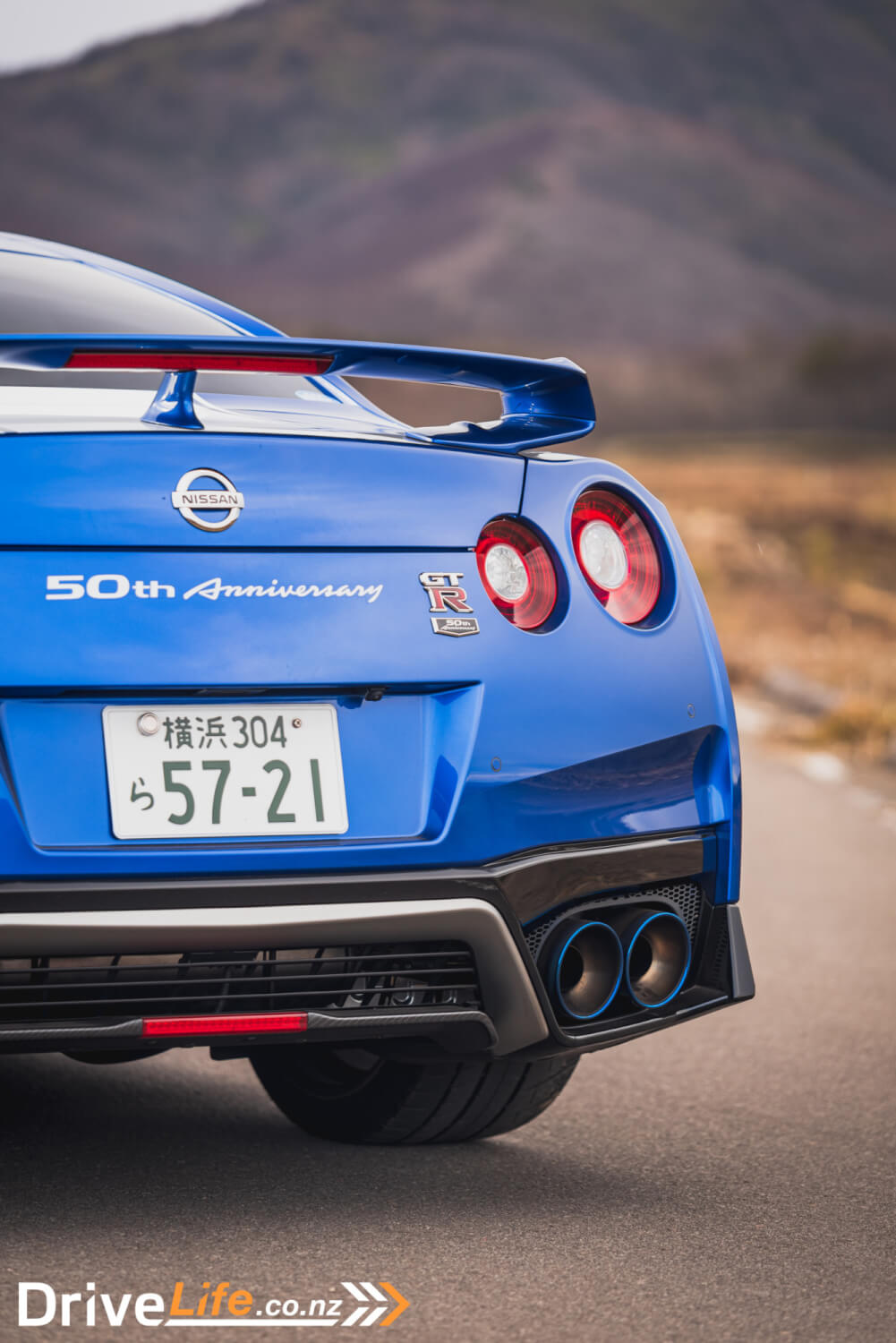1969 put man on the moon, The Beatles recorded Abbey Road, and the Nissan Skyline GT-R was born. For five decades the car known as ‘Godzilla’ has been redefining the term ‘affordable performance’. The GT-R has always been, and should always be, accessible speed for the masses. Carrying on the traditional boxy sedan shape, the GT-R has been a cultural icon for Japan as important as Mount Fuji, cherry blossoms, and Hello Kitty.
For over 12 years, or nearly a quarter, of the GT-R’s history, the R35 generation has been the defining GT-R for the 21st Century. Launched in 2007, the R35 generation has gone through minor changes each year until we get to this – the 50th Anniversary Edition. Celebrating half a century of one of Japan’s most iconic nameplates in true nostalgic style.
Available in this special blue dubbed “Wangan Blue” named after the infamous stretch of road connecting Nissan’s home city of Yokohama through to Chiba via Tokyo Bay. The colour was inspired by the iconic blue hue of the R34 Skyline GT-R’s “Bayside Blue” paintwork. After spending a few days with the 2020 Nissan GT-R 50th Anniversary Edition here are five things I liked and didn’t like about.
Five Things I Liked About The Nissan GT-R 50th Anniversary
Blistering performance
The GT-R has still got it. When it first blasted onto the scene way back in 2007 with a ‘mere’ 352kW it quickly became the performance car benchmark. All these years later, now with a healthy 419kW, it can still give supercars costing twice as much a run for their money. Mash the right pedal and brace yourself as the world around goes by in an anime-like flash. The 3.8-litre twin-turbo V6 has been tweaked and fettled, the 50th Anniversary gets new turbochargers for improved efficiency and better low rpm response and a retune of the electronic suspension for better cornering stability and ride.
Grip it, grip it good
It’s still a corning monster. Thanks to its clever AWD system few things can corner as quickly as a GT-R on tarmac. The way it can send all its power to the road is nothing short of breathtaking. It can go around corners at speeds you’d think wasn’t physically possible and the way it can find grip is mighty impressive. You can push it to its limits and I can almost guarantee the car’s limits will be beyond yours. If you want to cover ground fast, the GT-R is still one of the best choices.
Still a performance bargain
In the Japanese market the 2020 Nissan GT-R 50th Anniversary Edition comes in at around NZ$200,000, or roughly half of the equivalent Porsche 911 Turbo. Sure, the 911 may have gone through a generation change and an update since the GT-R was first released but that’s a testament to how far ahead the GT-R was for its time. More than a decade on it can still keep up with the best super sports cars on the market.
Updated interior
As with all GT-Rs from 2017 onwards, the updated interior is a massive improvement over the original R35 interior. The gauges remain unchanged and still very 2007 but the central screen is fantastically modern. It’s bright, crisp, and easy to use if a little bit laggy. Luckily it comes with Apple CarPlay. The sport displays are still good fun to use though.
Ease of usability
At the end of the day this is still a Nissan so it’s easy to use. It’s an automatic, it’s got a decent sized boot, and four seats. You could actually fit adults in the back if you tried, though they might not be super comfortable on trips longer than 30 minutes. It’s a sports car without looking flashy (if you ignore the massive white stripes) and it being a Nissan you know it won’t let you down.
Five Things I Disliked About The Nissan GT-R 50th Anniversary
It feels like a 12 year old car
There’s no escaping the age, the GT-R does feel like a product from the late-00s. It feels big and blunt compared to some of the sharper and more modern offerings. Sitting inside a modern day 992-generation Porsche 911 Carrera feels like a spaceship from a whole other dimension after sitting in a GT-R. The R36 generation needs to come very soon.
Still thirsty – needs 7th or 8th gear
Amazingly this one of the few cars I’ve tested where I’ve actually come close to the claimed fuel economy figures. Nissan claim a return of 12.8L/100km, I was getting around 13L/100km. Not too bad but it could still be better. The GT-R is crying for an extra gear or two for cruising. 6 gears is the perfect amount of gear, yes, but a 7th or 8th would just make longer drives in the GT-R a bit more pleasant. Not just for efficiency but also for quieting down the engine note on motorway drives.
Poor turning circle makes it difficult to manoeuvre
There’s no getting around this (literally), the GT-R has one of the worst turning circles. It makes doing three point turns or simple parking manoeuvres awkward. Luckily you have 419kW and 637NM of torque at your disposal to run away from the embarrassment.
Silly stripe and decals
If you want the 50th Anniversary Edition you need to be able to live with the stripe. I don’t mind it that much, there’s meaning to it. Apparently it harks back to racing liveries of the 1971 KPGC10 Skyline GT-Rs, but I can’t live with the massive “50th Anniversary” decal on the rear bumper. Luckily that’s an optional extra you needn’t tick.
You know there’ll be a new one just around the corner
If you already have a R35 GT-R there’s no reason to get the 50th Anniversary, especially if you have one from 2017 onwards. It’s best to hold on to that and wait for the upcoming new generation Nissan are promising us will arrive in a couple of years. However, as will all celebration editions, the 50th Anniversary Edition makes for an interesting addition to a GT-R collection and will eventually be a sought after variant in the future.
When all is said and done the GT-R is a car unlike any other. It’s got its own unique feel and characteristic, nothing else on the road feels like a GT-R to drive. Between this and the Lexus RC F, Japan have inadvertently made two of the most old-school performance cars in 2020. That’s not a bad thing at all.



